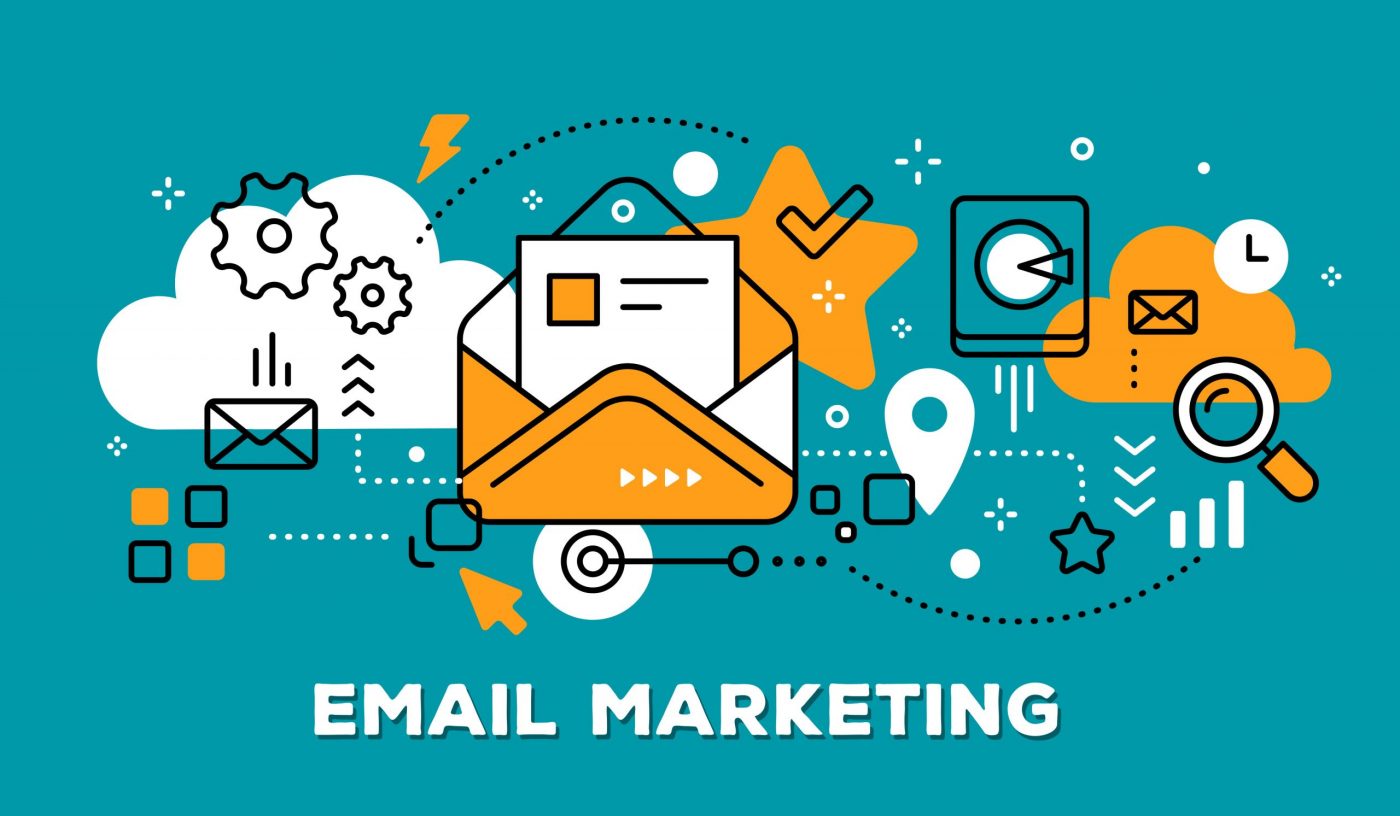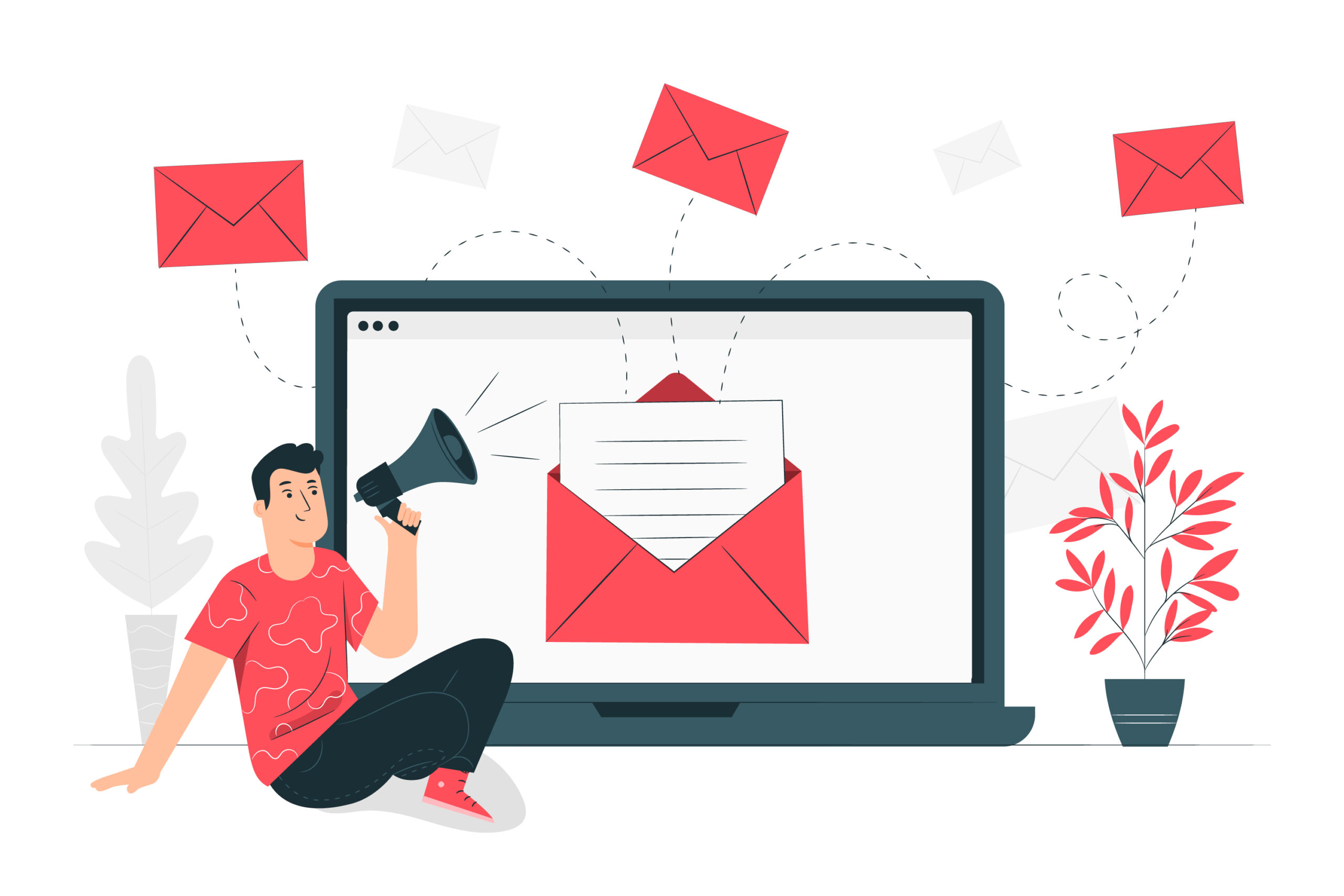Email marketing is one of the most effective ways to reach out to potential customers, increase brand awareness, and boost sales. However, to succeed in email marketing, you need to have a solid understanding of the strategies, tools, and techniques that go into creating effective email campaigns. In this article, we will discuss what to study in email marketing to help you get started on the right foot.
Benefits of E-mail Marketing:
Email marketing is a powerful and cost-effective way to reach out to potential customers, build brand awareness, and drive sales. In today’s digital age, email marketing has become an essential component of any successful marketing strategy. Here, we will explore some of the key benefits of email marketing.
1. Increased brand awareness:
By sending regular newsletters and promotional emails, you can keep your brand top-of-mind with your subscribers and build stronger relationships with them.
2. Targeted marketing:
Email marketing allows you to segment your email list and send targeted messages to specific groups of subscribers, based on their interests and behavior.
3. Cost-effective:
Compared to other marketing channels, email marketing is relatively inexpensive, making it a great option for businesses of all sizes.
4. Increased website traffic:
By including links to your website in your emails, you can drive more traffic to your site and potentially increase sales.
5. Measurable results:
Email marketing allows you to track metrics such as open rates, click-through rates, and conversions, giving you valuable insights into the effectiveness of your campaigns.
Overall, the benefits of email marketing are numerous, and it’s an essential tool for businesses looking to connect with their audience, build brand awareness, and drive sales. By creating compelling emails, segmenting your list, and tracking your results, you can maximize the impact of your email marketing efforts and see a positive return on investment.
Design effective E-mail:
Designing effective emails is a crucial aspect of email marketing that can significantly impact the success of your campaigns. A well-designed email can grab the attention of your subscribers, communicate your message clearly, and ultimately drive more conversions. Here are a few tips for designing effective emails:
1. Use attention-grabbing subject lines:
The subject line is the first thing your subscribers see, so it is essential to make it eye-catching and compelling. Use personalized subject lines that grab their attention and encourage them to open the email.
2. Keep it simple:
When it comes to email design, less is often more. Use a simple and clean layout with a clear message that is easy to read and understand.
3. Use images and videos:
Visuals can be a powerful tool to communicate your message and make your emails more engaging. Use high-quality images and videos to grab the attention of your subscribers and make your emails stand out.
4. Include a clear CTA:
A clear and compelling call-to-action (CTA) can help drive conversions by telling your subscribers what action to take next. Use a prominent CTA button that stands out and encourages subscribers to click through.
5. Ensure mobile responsiveness:
With more people accessing emails on their mobile devices, it is essential to ensure your emails are mobile-responsive. Use a responsive design that adjusts to fit the screen size of any device and ensure all the elements are easy to read and interact with.
By following these tips, you can design effective emails that engage your subscribers, communicate your message clearly, and drive more conversions.
E-mail Marketing Tools:
E-mail marketing is a powerful way to connect with your audience and grow your business. However, creating effective email campaigns can be challenging without the right tools. That is where e-mail marketing tools come in. With the right tools, you can streamline your campaigns, improve your strategy, and boost your ROI.
There are numerous e-mail marketing tools available that offer a range of features to help you create more effective campaigns. Some of the most popular e-mail marketing tools include Mailchimp, Campaign Monitor, Constant Contact, AWeber, and ConvertKit.
These tools offer features such as email automation, list segmentation, A/B testing, and analytics to help you create more effective campaigns. For example, email automation allows you to send targeted messages based on subscriber behavior, while list segmentation helps you send personalized messages to specific groups of subscribers. A/B testing allows you to test different subject lines, copy, and CTAs to determine what works best for your audience, while analytics help you track the success of your campaigns and make data-driven decisions.
In overall, e-mail marketing tools are essential for creating effective email campaigns that connect with your audience and drive results. By using the right e-mail marketing tools, you can streamline your campaigns, improve your strategy, and boost your ROI.
Increase CTR:
Increasing the click-through rate (CTR) is a crucial goal for any online marketer or business owner who wants to boost the effectiveness of their digital marketing campaigns. CTR is the ratio of clicks on your ad or link to the total number of impressions, and it is a key performance metric that determines the success of your campaigns.
There are several ways to increase CTR, such as optimizing your ad copy, using targeted keywords, and creating compelling headlines. One effective method is to personalize your ads and content to your audience. Personalization involves tailoring your messaging to the specific needs and interests of your target audience.
Another effective way to increase CTR is to use clear and compelling calls to action (CTAs) in your ads and content. A CTA is a statement that encourages the viewer to take a specific action, such as clicking on a link or filling out a form. Your CTA should be prominently displayed and clearly communicate what the viewer can expect when they click on your ad or link.
Using A/B testing is another effective way to increase CTR. A/B testing involves creating multiple versions of your ad or content and testing them against each other to see which version performs best. By testing different headlines, images, and CTAs, you can identify the elements that resonate most with your target audience and increase your CTR.
In summary, increasing CTR is an essential goal for any marketer or business owner looking to improve the effectiveness of their digital marketing campaigns. By personalizing your ads, using clear and compelling CTAs, and utilizing A/B testing, you can increase your CTR and drive more traffic, leads, and sales.
Tracking E-mail Conversion:
Tracking email conversion is a critical component of any successful email marketing campaign. It enables you to monitor the performance of your email campaigns, gain insights into what works and what does not, and optimize your strategy accordingly. In this article, we will discuss what tracking email conversion is, why it’s important, and how you can do it.
Tracking email conversion involves tracking the actions taken by your subscribers after they receive your email. These actions may include clicks on links, downloads, sign-ups, purchases, and more. By tracking these actions, you can determine the effectiveness of your email campaigns and make data-driven decisions to improve your strategy.
Tracking email conversion is essential for several reasons. First, it helps you measure the ROI of your email marketing efforts. By tracking conversions, you can determine how many sales or sign-ups were generated from each email campaign, and calculate the revenue generated from these actions.
Second, tracking email conversion helps you understand your audience better. By monitoring which emails resonate with your subscribers and which ones don’t, you can gain insights into their preferences and behavior. This information can then be used to segment your list and create more targeted campaigns that are more likely to convert.
There are several ways to track email conversion, including using Google Analytics, UTM tracking codes, and conversion tracking tools provided by email marketing platforms. By implementing these methods, you can gain a better understanding of your email campaign’s performance, optimize your strategy, and achieve better results.
Conclusion
In conclusion, email marketing is a powerful tool that can help you connect with your audience and grow your business. By studying the benefits of email marketing, designing effective emails, using the right email marketing tools, increasing your CTR, and tracking email conversions, you can create more effective campaigns that drive results.


